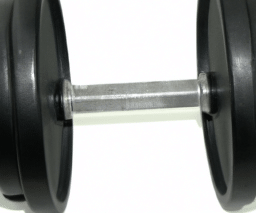Calisthenics is a fantastic way to build strength, flexibility, and endurance using nothing but your bodyweight. But how often should you incorporate this effective form of exercise into your routine? Finding the right balance is key to reaping its benefits without overexerting yourself. So, in this article, we will explore the optimal frequency for your calisthenics workouts, ensuring you maximize results while maintaining a healthy and sustainable fitness journey. Let’s dive in and discover how often you should do calisthenics to achieve your goals.
Understanding Calisthenics
Calisthenics is a form of exercise that involves using your own body weight to perform various movements and exercises. It is a great way to improve strength, flexibility, and overall fitness. Unlike weightlifting or using gym equipment, calisthenics relies on the resistance provided by your own body, making it a highly adaptable and accessible form of exercise for people of all fitness levels.
Definition of Calisthenics
Calisthenics, also known as bodyweight training, is a type of exercise that utilizes movements such as push-ups, pull-ups, squats, lunges, and planks to improve strength, endurance, and mobility. These exercises are typically performed without the need for additional weights or equipment. By utilizing your own body weight, calisthenics exercises engage multiple muscle groups simultaneously, providing a challenging and effective workout.
Benefits of Calisthenics
There are numerous benefits to incorporating calisthenics into your fitness routine. Firstly, it is a highly efficient way to improve overall strength and muscle tone, as it engages multiple muscle groups at once. It also helps improve flexibility, coordination, and balance. Calisthenics can be done anywhere, as it requires minimal equipment or none at all, making it a convenient and cost-effective workout option. Moreover, it is suitable for individuals of all fitness levels, from beginners to advanced athletes, as exercises can be modified to suit varying levels of strength and ability.
Key Factors to Consider
When determining how often you should do calisthenics, it is important to consider a few key factors that will help guide you in creating a personalized workout routine that suits your individual needs.
Fitness Level
Your current fitness level plays a significant role in determining the frequency of your calisthenics workouts. Beginners may need more rest and recovery time compared to those who are more experienced or have a higher fitness level. It is crucial to start at a frequency that challenges you but still allows for adequate rest and recovery.
Goals and Objectives
Your specific fitness goals and objectives will also impact the frequency of your calisthenics workouts. Whether you aim to build strength, improve overall fitness, or work towards specific skills like mastering advanced calisthenics movements, your training frequency will need to align with your goals.
Time Availability
Considering your schedule and time availability is important when determining the frequency of your calisthenics workouts. If you have a busy lifestyle or limited time, you may need to make adjustments to find a training frequency that can be consistently maintained.
Recovery and Rest
Rest and recovery are crucial parts of any workout routine, including calisthenics. Your body needs time to repair and rebuild muscle tissues after intense workouts. Failing to incorporate enough rest and recovery time can lead to overtraining and increased risk of injury. Striking a balance between training and rest is essential for optimal results.
Determining Frequency of Calisthenics
Balancing Exercise and Rest
To strike the right balance, it is important to not only consider the frequency of your calisthenics workouts but also the rest days in between. Rest days allow your muscles to recover and adapt to the stress of exercise. Aim to have at least one or two rest days per week, depending on your fitness level and recovery needs.
Weekly vs. Daily Schedule
Another factor to consider when determining the frequency of your calisthenics workouts is whether you prefer a weekly or daily schedule. Some individuals may benefit from incorporating full-body calisthenics workouts three to five days per week, while others may prefer to split their workouts into specific muscle groups or movement patterns and train on alternate days.
Progressive Overload
Progressive overload is an essential principle in calisthenics training, which involves gradually increasing the difficulty or intensity of your workouts over time. This can be achieved by increasing the number of repetitions, sets, or incorporating more challenging exercises. To avoid plateauing or reaching a training plateau, it is essential to adjust the frequency of your workouts periodically to ensure continuous progress.
Beginner Guidelines
Starting Frequency
For beginners, it is recommended to start with two to three calisthenics workouts per week. This allows your body to adapt to the new movements and exercise intensity while providing ample time for rest and recovery. It is important to focus on proper form and technique, gradually increasing the number of repetitions and sets as you become more comfortable.
Building Consistency
Consistency is key when it comes to calisthenics, especially for beginners. Aim to establish a routine that you can realistically adhere to. Starting with two to three workouts per week and gradually building up to four or five sessions per week can help you build consistency and make calisthenics a sustainable part of your lifestyle.
Gradual Progression
As a beginner, it is important to progress gradually to avoid overexertion or injury. Increase the number of repetitions, sets, or difficulty of exercises as you become stronger and more comfortable with the movements. However, be mindful not to rush the progression and prioritize proper form and technique at all times.
Intermediate and Advanced Training
Frequency for Muscle Development
As you progress to an intermediate or advanced level in calisthenics, you may benefit from increasing the frequency of your workouts to promote muscle growth and development. This could involve training four to six days per week, targeting specific muscle groups or movement patterns on different days.
Splitting Training Days
Splitting your training days during the week allows you to focus on specific muscle groups or movement patterns, enabling you to incorporate a higher volume of exercises while still allowing for adequate rest and recovery. For example, you could have a leg day, upper body day, and a core-focused day, spreading your workouts across the week.
Varying Intensity and Volume
To continuously challenge your body and prevent stagnation, it is important to vary the intensity and volume of your workouts. This can be achieved by incorporating advanced variations of exercises, increasing the number of sets and repetitions, or incorporating high-intensity interval training (HIIT) sessions. Experiment with different training methods to find what works best for you.
Factors Influencing Frequency
Age and Recovery
Age can play a significant role in recovery and the frequency of your calisthenics workouts. As we age, our bodies may require more rest and recovery time. It is important to listen to your body and adjust your training frequency accordingly. Older individuals may need to allow for more rest days between workouts compared to younger individuals.
Training Split and Routine
The specific training split and routine you follow will also influence the frequency of your calisthenics workouts. Some training splits involve training specific muscle groups on different days, while others focus on full-body workouts. Consider the demands placed on your muscles and allow for adequate recovery time between sessions.
Specific Calisthenics Exercises
Certain calisthenics exercises may require more recovery time compared to others. For example, exercises that heavily engage the upper body, such as pull-ups or muscle-ups, may require more rest days compared to lower body exercises like squats or lunges. Consider the intensity and demands of each exercise to determine the appropriate frequency of your workouts.
Common Mistakes to Avoid
Skipping Rest Days
Skipping rest days is a common mistake that can hinder your progress and increase the risk of injury. Rest days are essential for your muscles to recover and adapt to the stress of exercise. Aim to have at least one or two rest days per week, depending on your fitness level and individual recovery needs.
Overtraining
Overtraining occurs when you consistently push your body to its limits without allowing for adequate rest and recovery. This can lead to decreased performance, increased risk of injury, and burnout. Avoid overtraining by listening to your body, adjusting your training intensity, and incorporating enough rest and recovery time into your routine.
Neglecting Recovery
Recovery is just as important as the hard work you put into your calisthenics workouts. Neglecting proper recovery strategies such as stretching, foam rolling, or even getting enough quality sleep can hinder your progress and increase the risk of injury. Make recovery a priority to optimize your performance and overall well-being.
Listening to Your Body
Understanding Signs of Overtraining
Listening to your body is crucial when it comes to determining the frequency of your calisthenics workouts. Overtraining can have detrimental effects on your overall health and progress. Signs of overtraining may include persistent muscle soreness, fatigue, decreased performance, mood swings, and an increased risk of injury. If you experience any of these symptoms, it is important to reduce the frequency or intensity of your workouts and prioritize rest and recovery.
Importance of Rest and Recovery
Rest and recovery are vital for maximizing the benefits of your calisthenics workouts. During rest and recovery periods, your body repairs and rebuilds muscle tissues, allowing you to come back stronger for your next workout. Adequate sleep, proper nutrition, and light activities such as walking or stretching can help promote optimal recovery and prevent overtraining.

Conclusion
Finding the right frequency for your calisthenics workouts is a highly individual process that depends on various factors such as your fitness level, goals, time availability, and recovery needs. Remember to prioritize consistency, gradually progress, and listen to your body throughout your calisthenics journey. Personalize your routine according to your needs and make sure to strike a balance between training and rest. By doing so, you can reap the numerous benefits of calisthenics and achieve your fitness goals in a safe and sustainable manner.








